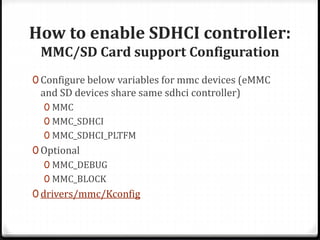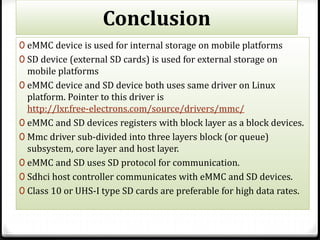The document discusses storage devices on mobile platforms, highlighting RAM, internal storage, and external storage devices along with their characteristics. It explains the role of flash memory and provides an overview of the Linux kernel's MMC device drivers which manage these storage devices. The document details the architecture, functions, and processes involved in data transfer between the host controller and storage devices, as well as guidelines for device registration and configuration.

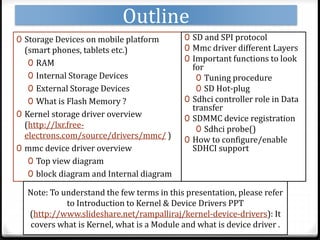
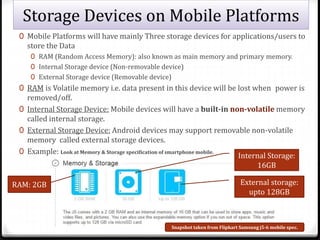
![What is Flash Memory ?
0 Flash Memory is a non-volatile, solid state storage device i.e. keeps
its data without power.
0 Flash Memory is being used in wide range of devices. Examples are
0 Internal storage devices (eMMC or UFS)
0 USB sticks and SD Memory Cards
0 Digital audio players
0 Flash memory offers very high speed access to data.
0 Advantage: Flash memory, when packaged in a "memory card", is
very resilient to damage, unlike many other storage devices. It can
withstand extremes of temperature, being immersed in water or
being accidentally dropped [2].
0 Disadvantage: It has a limited number of read/write cycles which
limits its useful life span.](https://image.slidesharecdn.com/storagedriverandroid-170219142052/85/Linux-Kernel-MMC-Storage-driver-Overview-4-320.jpg)
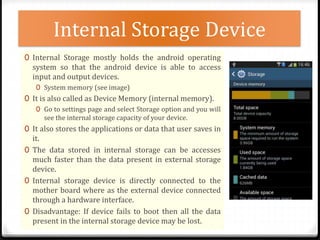

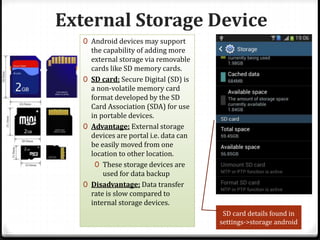
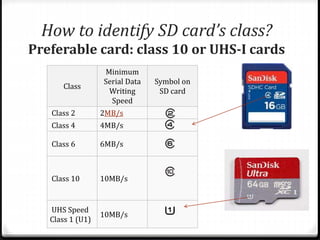

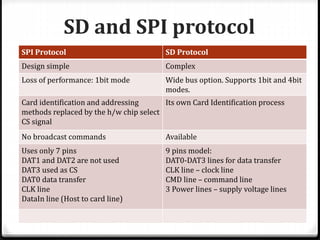
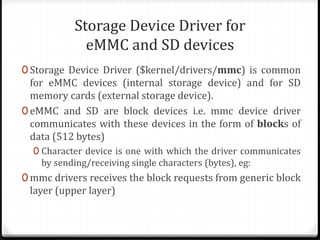

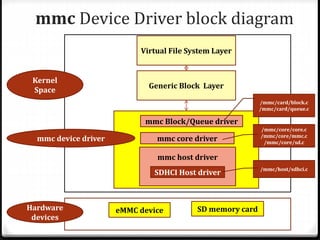




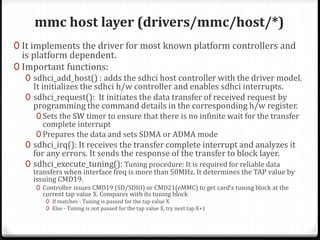
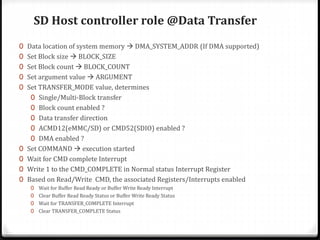
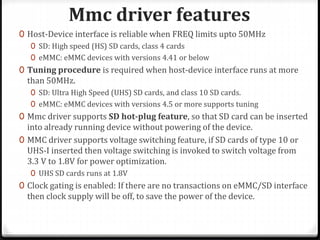
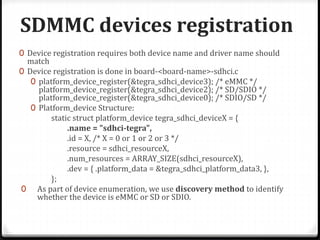
![SDHCI probe()
Probe() is called when device is recognized by the platform
Driver’s init function gives kernel a list of devices it is able to
service, along with a pointer to a probe function. Kernel then calls
the driver’s probe function one for each device.
0 probe function starts the per-device initialization:
0 initializing hardware, allocating resources, and
0 registering the device with the kernel as a block device.
0 Kernel/drivers/mmc/host/sdhic-tegra.c sdhci_tegra_probe()
0 Host controller initialization at
kernel/drivers/mmc/host/sdhci.c sdhci_add_host()
0 Device initialization starts in
kernel/drivers/mmc/core/core.c mmc_rescan()
0 Starts execution when Host detects the device.
0 mmc_attach_sdio() sdio.c [core driver]
0 mmc_attach_sd() sd.c [core driver]
0 mmc_attach_mmc() mmc.c [core driver]](https://image.slidesharecdn.com/storagedriverandroid-170219142052/85/Linux-Kernel-MMC-Storage-driver-Overview-22-320.jpg)
